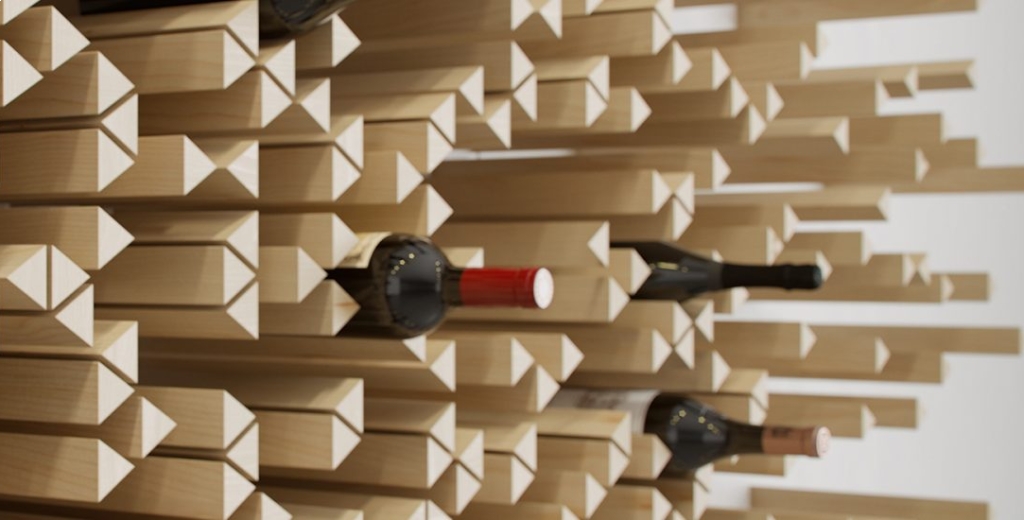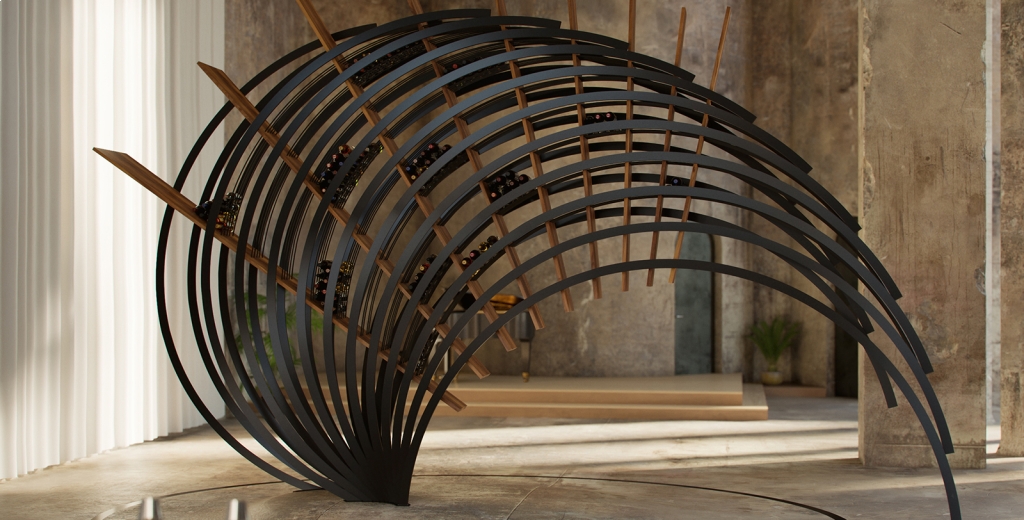MODERN DESIGN WINE CELLARS
How to create gallery-worthy storage for your wine collection


2021 © Christie's International Real Estate
Text by Julia Zaltzman
All rights reserved
Savvy wine collectors are turning their storage options into eye-catching designs, with art installation-like solutions transforming cellars around the world.
What was once the reserve of sprawling chateaux in the south of France has elbowed its way to the forefront of interior design, with wine enthusiasts the world over creating gallery-like storage spaces that not only house their collections but also display them as art.
“Wine storage as a feature first came about in France in the 1970s, developed by a Frenchman called Georges Harnois,” says Mark Dickens, creative director of Spiral Cellars. “It was more of a functional space back then, but was driven by owners of private residences who desired the convenience of having their own dedicated wine storage.”
Harnois’ idea was to dig a 6.5-foot-wide (2 m) hole in his garage floor, first lining it with wood and then refining the idea with concrete modules. “The spiral wine cellar as we know it today has evolved over time,” says Dickens, whose company began building spiral cellars in the UK in 1981. “Originally it would have had a solid door over it to conceal the space, but from 2005 onwards we began building cellars with a glass door, and the focus shifted to showing the wine off in a well-lit display unit.”
FORM WITH FUNCTION
The drama of a glass-covered spiral wine cellar in a Mayfair or Manhattan kitchen is not to be underestimated, and yet the technology behind it is actually pretty simple. “A spiral cellar is naturally ventilated and relies on ground-source cooling, so there are very few mechanics involved and it’s eco-friendly,” says Dickens, whose largest cellar descends 10 feet (3 m) into the ground and holds 1,900 bottles. “As long as you’re digging down into the ground, that will give you the right conditions for storing wine.”
However, not all wine cellars reside in the ground. In the dizzy world of superyachts, the line between functional storage and sculptural design is a steely shade of gray. Examples of inventive solutions include 10-foot (3 m) floor-to-ceiling glass-fronted “wine walls” as found on 111-meter (364 ft) yacht TIS, and integrated display units that expand forwards and upwards.
When the owner of 40-meter (131 ft) yacht Endless Summer was asked to choose between a wine cellar or butler’s pantry, he gave the linen the heave-ho. “The intention was always for the cellar to be a focal point given its location at the top of the stairwell to the bridge deck. It’s most certainly on show”, says Captain Anthony Hodgson.
The bespoke teak cellar holds 432 bottles and 60 magnums and factors in a few additional safeguards for when at sea. An air-conditioning expansion unit serves as a back-up should the main HVAC system shut down. Neoprene-lined shelves sit at a seven-degree slant to keep the corks in constant contact with liquid and the bottles “sea fastened”. Concealed lighting illuminates the labels that the owner has collected from vineyards across the globe, including a 1996 Pinot Noir from Burgundy.

MECHANIC VS AESTHETICS
When cellars are above ground, transparent glass designs can create issues around U.V. exposure and concealing inner mechanisms, as insulation, dehumidification, and climate control measures are important factors. Canada-based CellArt’s custom-designed wine cellars monitor 13 different elements, from noise and vibration to humidity and light.
“The ideal temperature to store all wine—whether red, white, or sparkling—is between 54–59°F (12–15°C). The higher the temperature a wine is stored, the faster it will evolve,” says Jonathan Primeau, founder of CellArt. “What matters is the temperature that the wine is consumed at.”
That said, it’s not all about mechanics. For most clients, aesthetics is the primary concern, irrespective of cost. “When we started in 2013 it was about $2 per bottle space,” says Primeau, “now people are willing to pay up to $2,500 per space.”

GALLANT GALLERIES
Of course, not all wine cellars are owned by oenophiles. “Sometimes people want them to house their shoe collection, and we have one customer who uses his cellar to store his antique books,” says Dickens. “Because our spiral cellars are modular, the whole thing builds up a bit like a Lego set, so for customers who collect whisky, which requires the bottles to be standing up rather than lying down, we can flip one section of the cellar on its head to gain more height.”
Meanwhile, other wine storage concepts eradicate the functional element altogether. Alongside the high-end wine vaults that are finding their way into penthouse condominiums, superyachts, and private jets, CellArt creates geometric sculptures developed in partnership with artists Frédéric Cordier and Mathieu Beauséjour.
Cordier’s artistic vision for his wine sculpture Fade Out is a deconstructive interpretation of a traditional wine cellar grid that sees the usual uniform storage sequencing “disturbed”. Alternatively, Flux by Beauséjour refers to the concept of a wave suspended in time.
“I wanted to invest in the concept of repetitive circular motions and lines,” says Beauséjour. “The diagonals and rays are the structural elements of the cellar offering multiple possibilities to present and showcase wine collections.”
For Primeau, it’s about making a statement. “My approach to art storage is to flip it on its head. Instead of taking custom orders, we commission artists to produce bespoke works of art that need to be accommodated, much like a large sculpture. It’s about finding a space to showcase the wine art, rather than fitting storage into an existing environment. There is literally no limit to wine enthusiasts’ creativity and desires.”


 Eng
Eng Ita
Ita









 Back to list
Back to list 









